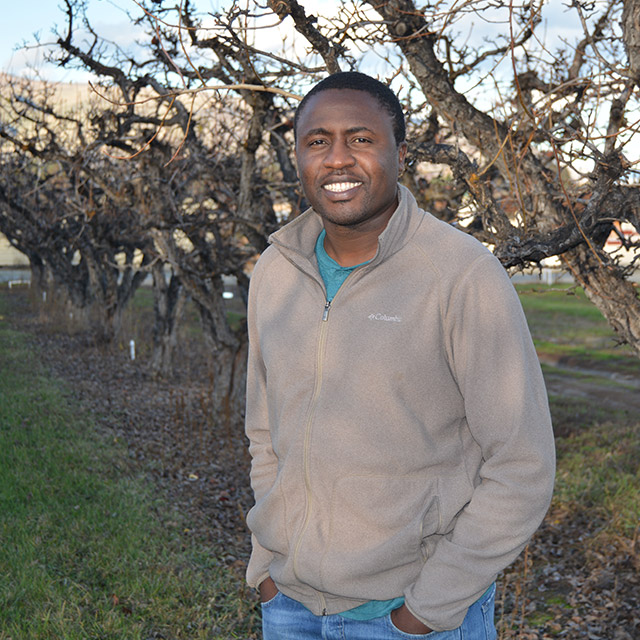
Giverson Mupambi is one of the lucky few who enjoys all aspects of his work. He started in his current position as extension assistant professor at the University of Massachusetts Amherst (USA) in January 2019 and is based at Cranberry Station in East Wareham, Massachusetts.
His work includes interacting with cranberry growers and conducting applied research to providing solutions for current challenges that are being faced by cranberry growers. His work focuses on applied research aimed at finding immediate solutions for problems facing the cranberry industry and coming up with practical solutions.
In his current position he assists the community in Southeastern Massachusetts by enhancing the economic viability of the Massachusetts cranberry industry through research and outreach. The cranberry industry is important for their community in terms of providing employment and other downstream industries such as juice processing.
“I am motivated by helping farmers meet the challenges of a changing world. I want to help them with solutions for the impact of climate change in cranberry production and how to maximise production whilst facing stiff competition for limited resources such as labour, agricultural land and water for irrigation.” Giverson’s goals for the future are to train more applied agricultural researchers by engaging students and postdoctorals into his research programme. “I want to make agricultural research ‘cool’ so that we can attract the next generation of agricultural extension specialists.”
With an MSc and PhD in horticultural science (2010 and 2017) from Stellenbosch University (SU), Giverson started his career in 2017 as postdoctoral research associate at Washington State University (USA) where he was situated until the end of 2018. His postdoctoral research centred on the eco-physiological response of apple trees to netting and water stress. He says sunburn is a big problem for growers in Washington as well as in South Africa. Shade netting is a good option to reduce sunburn because if photo-selective netting is used, the light spectrum underneath the netting can be controlled to give more blue or red light. The netting also helps with better soil moisture control, which is helpful in areas where there are droughts.
He grew up in Zimbabwe in a town called Mutare and did his undergraduate studies at the University of Fort Hare majoring in agricultural economics and plant production. The plant production part included crop science and horticultural science, which he enjoyed a lot. By his final year he knew he wanted to study horticultural science at postgraduate level. “SU had the reputation of having the best Horticulture Department in South Africa and I decided to apply for my master’s and I got accepted.”
He moved to Stellenbosch in 2008 to start his master’s degree with Dr Stephan Verreynne and lived in Metanoia residence. After his master’s he spent a year working as a research assistant in the Department of Horticulture Science before enrolling for his PhD under the supervision of Prof Wiehann Steyn. “Looking back, it was tough, but I am grateful for the guidance I received,” he says.
His PhD focused on water relations and sunburn in apple fruit, as sunburn in apple is a major problem in South Africa with losses of up to 50% of total yield according to his studies. His primary objective was to investigate the relationship between tree water relations and sunburn development under South African conditions. He pointed out that the main apple growing regions in South Africa experience high radiation, while temperatures often exceed 40 oC during the growing season. The study provides further proof of the link between plant water status and sunburn development. It shows that good management of plant water status through irrigation is very important to controlling sunburn in regions with high temperatures. While doing his PhD, he decided that he needed some work experience and he got a one-year research assistantship at the Washington Tree Fruit Research Commission in Wenatchee USA through The Ohio Programme. During this time, he did some ecophysiology work for Washington State University, Tree Fruit Research and Extension Centre under the guidance of Dr Lee Kalcsits who decided to hire him as a postdoctoral research associate.
- By Elbie Els -